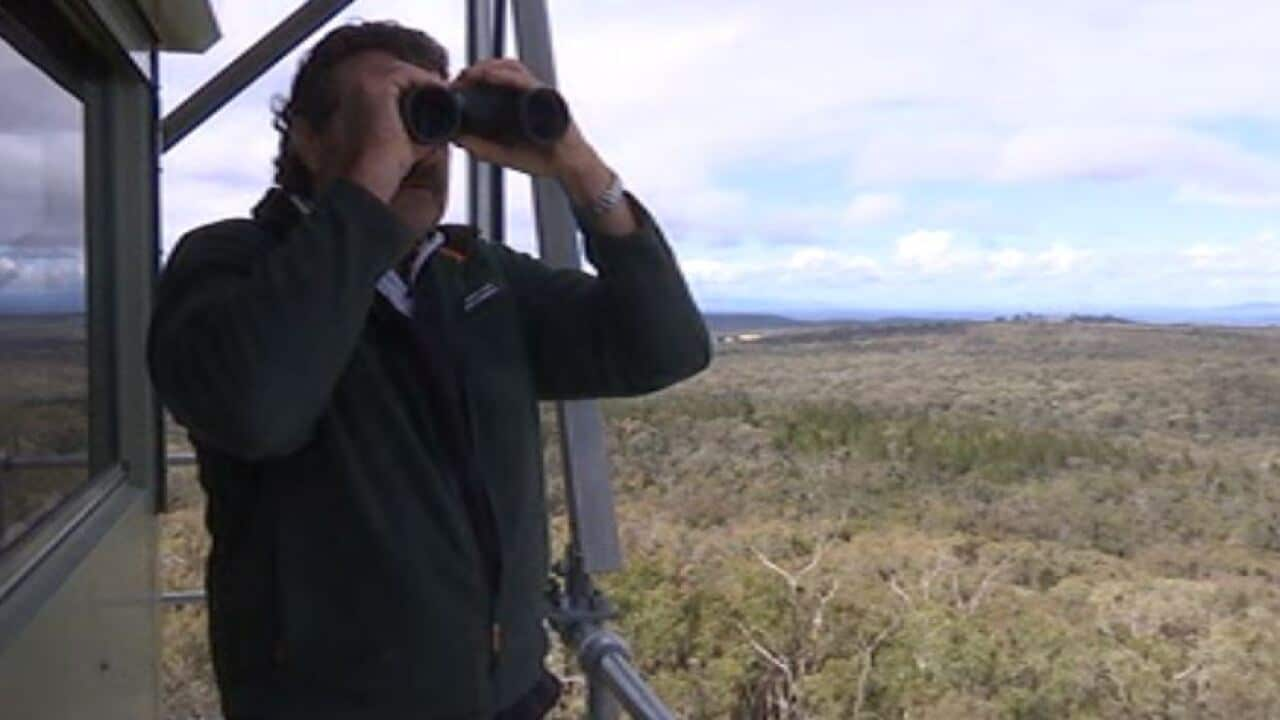Prescribed burn-offs in bushland have little impact on reducing the extent and intensity of wildfires, a study has found.
Burn-offs are a routine part of preparations for bushfire season across Australia, but modelling done by researchers in Tasmania suggests fire authorities need to target unrealistically-sized parcels of land to have any meaningful effect on taming future wildfires.
The aim of prescribed burning is to reduces the amount of combustible material in the bush so that if a fire starts it won't spread as far or be as intense.
RELATED READING

Battling bushfires: A day in the life of a fire spotter
To test how much prescribed burning would need to be undertaken in order to reduce the intensity and extent of a future bushfire, researchers from the University of Tasmania's school of biological sciences simulated more than 11,000 hypothetical fires on a typically dangerous fire-weather day in the apple isle.
"Planned burning is a necessity but in my opinion not sufficient approach particularly at the broad scale. We have to start going local" - Professor David Bowman
They found that firefighters would need to carry out prescribed burn-offs across 31 per cent of Tasmania in order to have a significant impact on reducing the threat from wildfires.
More realistic smaller-scale burn-offs, however, had almost no effect on the extent and intensity of a wildfire.
Professor David Bowman, who helped lead the study, said the findings suggest that planned burnoffs are still necessary but not sufficient.
He believes governments and fire authorities need to consider taking a more local approach, and introduce on the outskirts of towns and cities clever landscape designs that include irrigation and green fire breaks in the form of parklands, that can work in conjunction with burn-offs to help mitigate bushfire risks.
"This is of global significance, to try to work out how we are going to coexist with flammable landscapes with an accelerating risk of climate change, which is shrinking the safe days to do planned burning but heightening the number of dangerous days when there will be uncontrolled bushfires," he told AAP.
"There's no question we need fuel management, there's an urgent need.
"Planned burning is a necessity but in my opinion not sufficient approach particularly at the broad scale. We have to start going local."
Prof Bowman said the downsides of relying on planned burn-offs to mitigate bushfire risk include smoke haze, which can cause breathing difficulties for many people in nearby communities, as well as the fact that the blazes can run out of control and can't be carried out in extremely dense bushland.
And while he acknowledges it could be expensive to introduce landscape designs to help counter bushfires, he argues they are a necessary cost for state and local governments.
"If we think about earthquakes you don't hear people complaining, certainly in New Zealand, about the cost of a house that's going to survive an earthquake," Prof Bowman said.
"Yet in the fire space we have some building regulations but surely having fire-safe communities is a good investment."
The study was published in the International Journal of Wildland Fire on Friday.
Share


